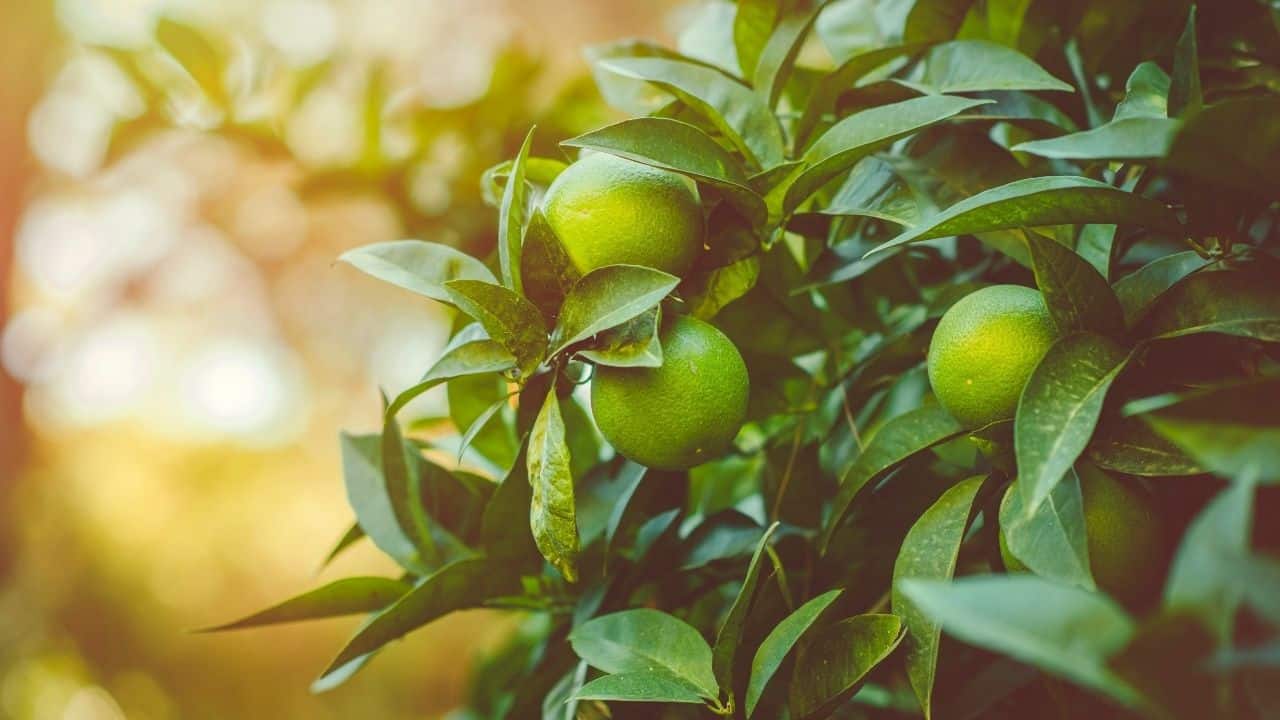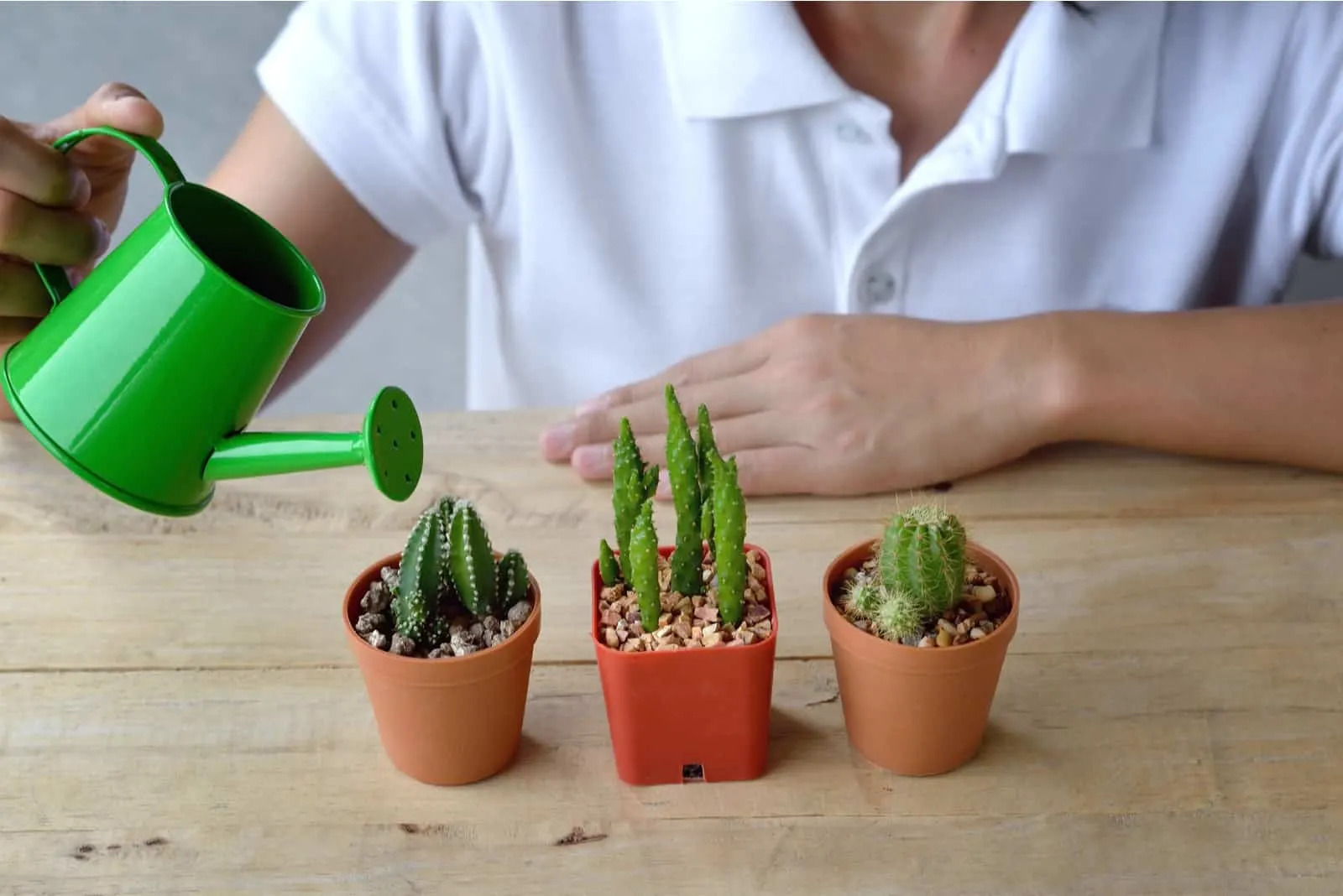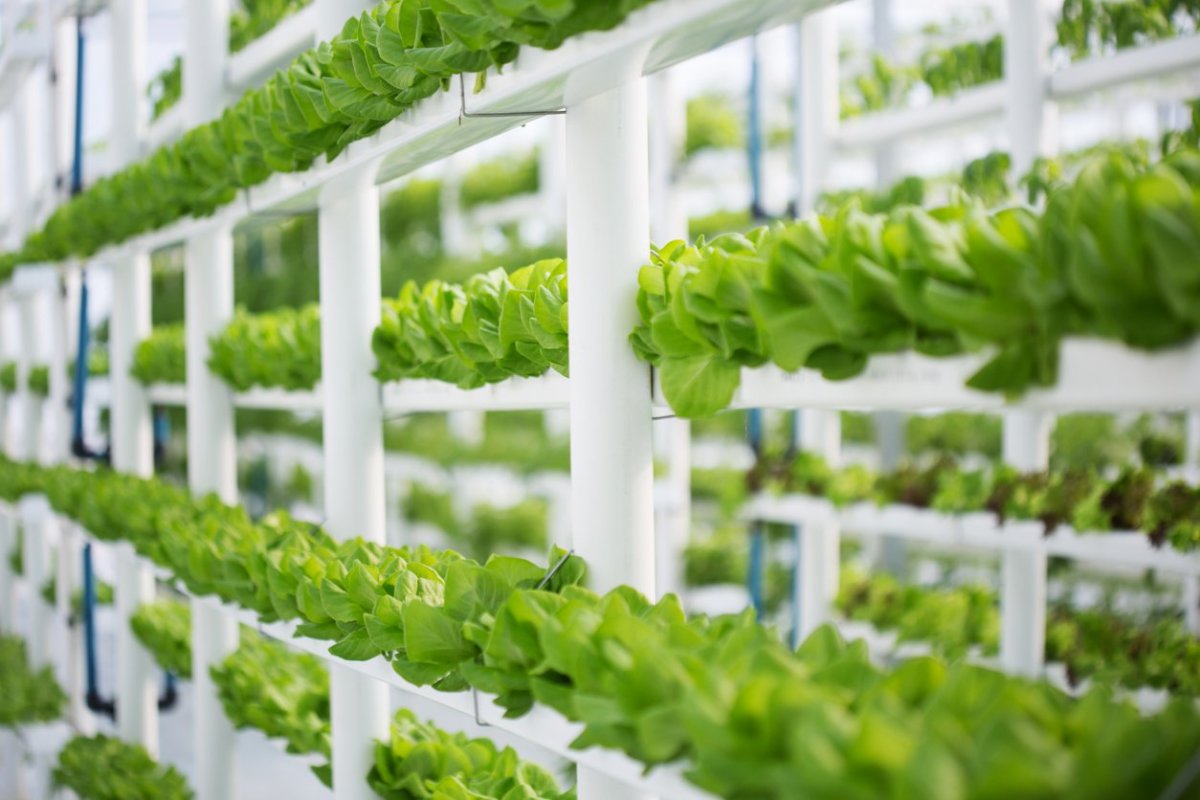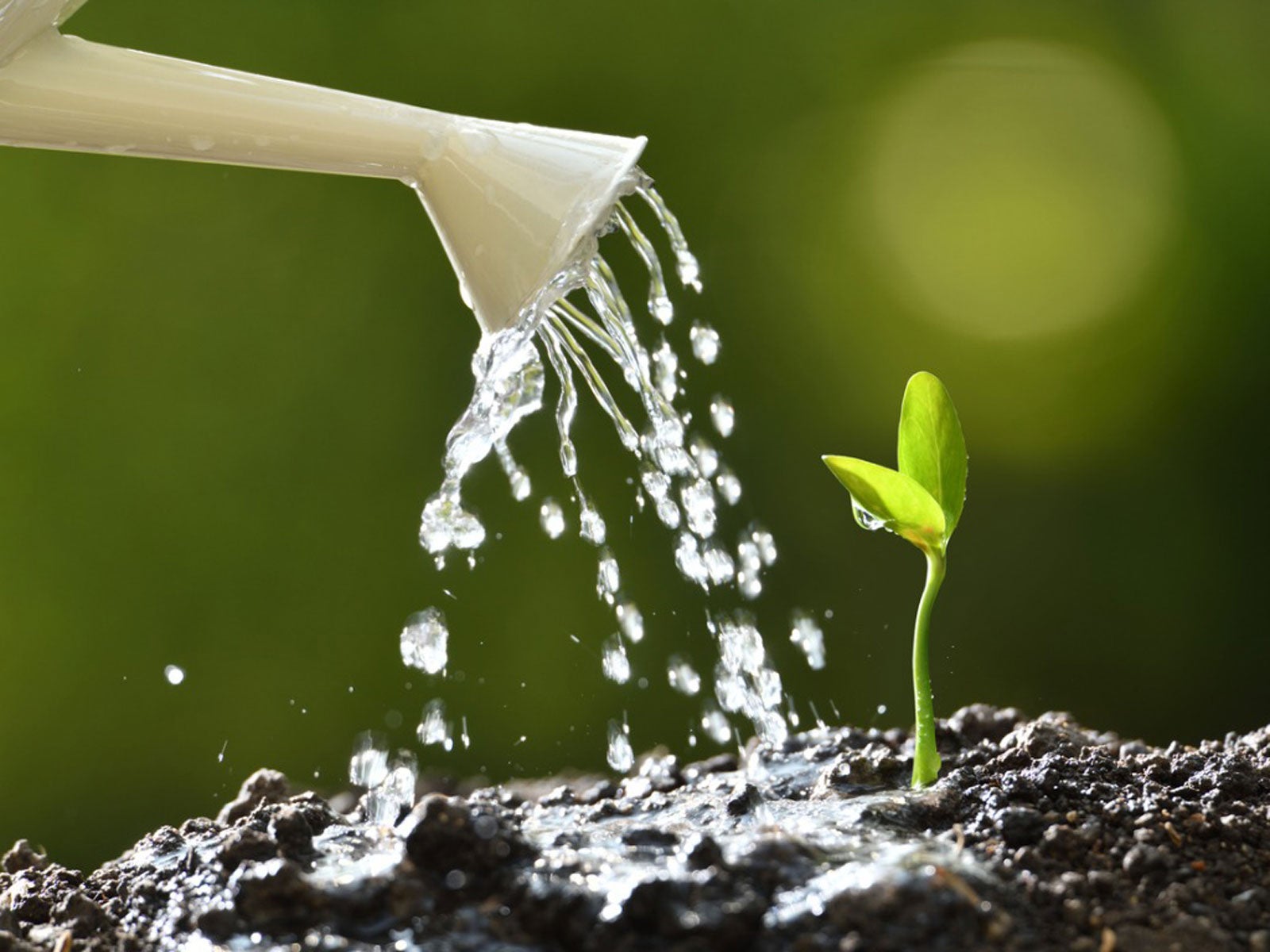Home>Gardening Techniques>Plant Care>How Often To Water Citrus Trees
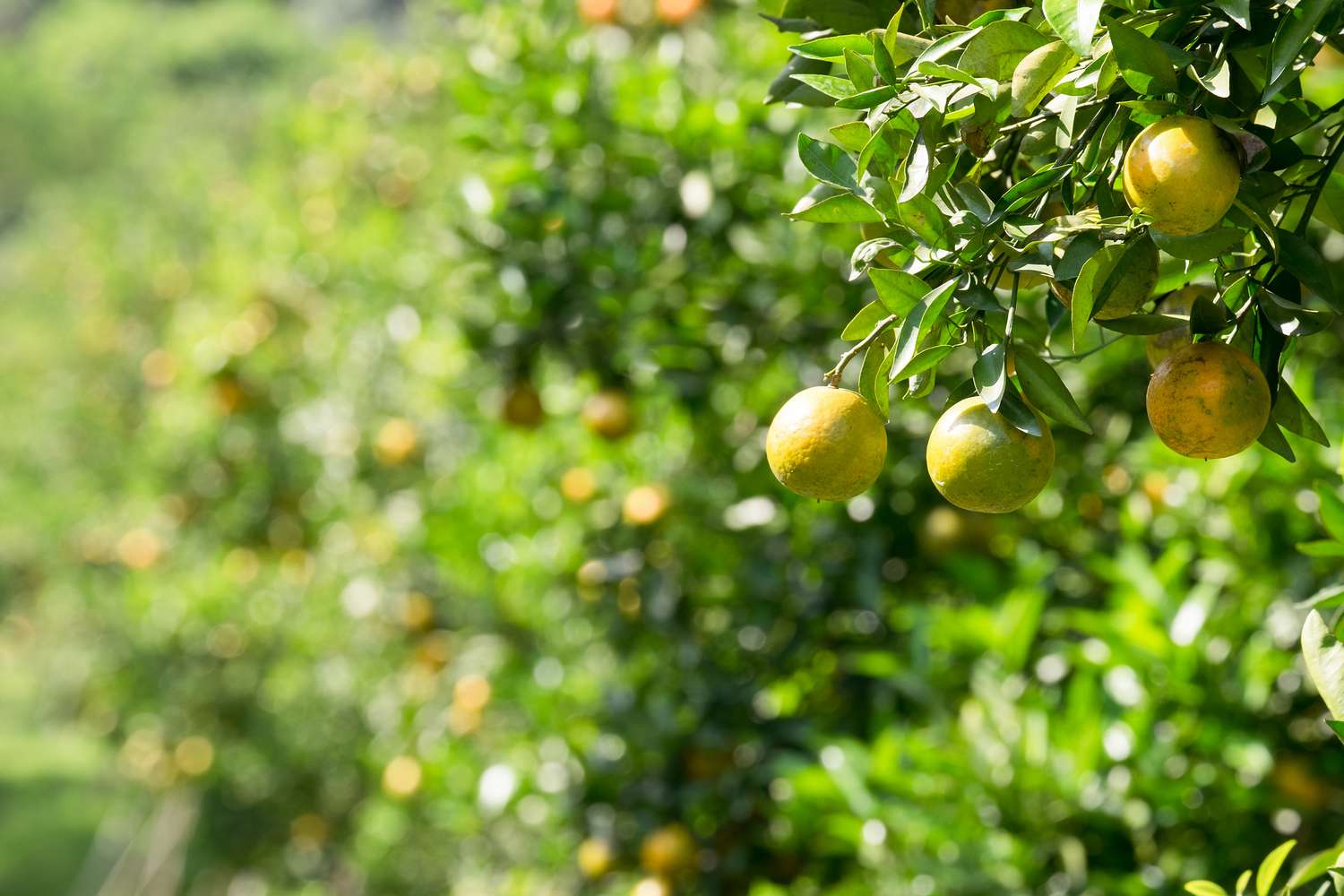

Plant Care
How Often To Water Citrus Trees
Published: October 28, 2023
Proper plant care is essential for the health of your citrus trees. Learn how often to water your citrus trees to ensure optimal growth and fruit production.
(Many of the links in this article redirect to a specific reviewed product. Your purchase of these products through affiliate links helps to generate commission for Chicagolandgardening.com, at no extra cost. Learn more)
Table of Contents
- Introduction
- Factors Affecting Watering Frequency
- Signs of Underwatering
- Signs of Overwatering
- General Guidelines for Watering Citrus Trees
- Watering Schedule for Newly Planted Citrus Trees
- Watering Schedule for Established Citrus Trees
- Watering Citrus Trees in Different Seasons
- Importance of Proper Drainage
- Additional Tips for Watering Citrus Trees
- Conclusion
Introduction
Welcome to the world of plant care, where we explore the art of nurturing and maintaining beautiful and healthy plants. One aspect of plant care that often requires special attention is watering. Proper watering is crucial for the well-being of any plant, including citrus trees. Knowing how often to water citrus trees can make a significant difference in their growth and productivity.
Citrus trees, which include popular varieties such as oranges, lemons, and grapefruits, thrive in warm climates and require consistent watering to stay hydrated. However, determining the ideal watering frequency for citrus trees can be a bit challenging, as it depends on various factors such as climate, soil type, tree age, and the season.
In this article, we will explore the essential factors that influence watering frequency for citrus trees, signs of both underwatering and overwatering, and provide general guidelines and specific watering schedules for newly planted and established citrus trees. We will also discuss the importance of proper drainage and offer additional tips to ensure your citrus trees receive the right amount of water for optimum health.
Whether you are a seasoned plant enthusiast or a beginner looking to embark on your journey of citrus tree care, this article will serve as your comprehensive guide, equipping you with all the necessary knowledge to keep your citrus trees thriving and producing bountiful fruits.
Factors Affecting Watering Frequency
Several crucial factors influence how often you should water your citrus trees. Understanding these factors will help you tailor your watering routine to meet your trees’ specific needs. Let’s take a closer look at these factors:
Climate: The climate plays a significant role in determining how frequently you need to water your citrus trees. In hotter and drier climates, trees tend to lose more moisture through evaporation, requiring more frequent watering. Conversely, in cooler and more humid climates, trees may require less frequent watering.
Soil Type: The type of soil in which your citrus trees are planted also affects watering frequency. Well-draining soils, such as sandy or loamy soils, allow water to pass through easily, requiring more frequent watering. In contrast, heavy clay soils retain water for longer periods, reducing the need for frequent watering.
Tree Age and Size: Young, newly planted citrus trees have smaller root systems and less capacity to extract water from the soil. Therefore, they require more frequent watering. As citrus trees mature and develop extensive root systems, they become more efficient at absorbing water, reducing the frequency of watering.
Season: The season greatly influences the watering needs of citrus trees. During the hotter summer months, when evaporation rates are high, trees may require more frequent watering. In cooler seasons like fall and winter, trees may require less water as evaporation rates decrease.
Fruit Development: Citrus trees require adequate water during fruit development to ensure proper growth and maturity. Insufficient water during this critical period can lead to small or underdeveloped fruits. Therefore, you may need to increase watering frequency when your trees are producing fruits.
Microclimate: Microclimate refers to the specific conditions in the immediate vicinity of your citrus trees. Factors such as nearby buildings, shading from other trees, or the presence of reflective surfaces can affect the amount of sun, wind, and heat your trees receive. Consider these factors when determining your watering frequency.
By considering these factors and observing your citrus trees’ specific needs, you can fine-tune your watering routine to ensure they receive the appropriate amount of water for optimum health and growth.
Signs of Underwatering
Proper watering is vital for the health of your citrus trees. When a citrus tree is not receiving enough water, it can suffer from dehydration, leading to various issues. Here are some common signs that indicate your citrus tree is not getting enough water:
Wilting Leaves: One of the primary signs of underwatering is wilting leaves. When a citrus tree lacks water, its leaves may appear droopy, curl up, or even wilt completely. This is the tree’s way of conserving water and reducing surface area for evaporation.
Yellowing Leaves: Another noticeable sign of underwatering is yellowing leaves. As the tree lacks sufficient water, it cannot carry out essential functions, causing the leaves to turn yellow. Pay attention to leaves towards the bottom of the tree, as these are often the first to show signs of water stress.
Leaf Drop: When a citrus tree is underwatered for an extended period, it may shed its leaves as a survival mechanism. This helps conserve water and energy for the tree to stay alive. If you notice excessive leaf drop, it’s a clear indication that your tree is not receiving enough water.
Stunted Growth: Underwatered citrus trees may exhibit slowed or stunted growth. When the tree doesn’t have enough water for photosynthesis and nutrient uptake, its overall growth can be negatively impacted. You may notice that new leaves, shoots, or fruits are not developing as they should.
Dry Soil: Take a close look at the soil surrounding your citrus tree. If it feels dry to the touch or pulls away from the edges of the pot or root zone, it’s a sign that the tree is not receiving enough water. Dry soil indicates that water is not penetrating deep enough to reach the roots.
Increased Pest and Disease Susceptibility: Underwatered citrus trees can become more susceptible to pests and diseases. When a tree is stressed due to lack of water, it becomes weaker and less able to fend off attacks from insects or fight off infections.
Observing these signs is crucial in identifying if your citrus tree is being underwatered. If you notice any of these symptoms, it is important to adjust your watering practices and ensure your tree receives adequate hydration to promote its health and vitality.
Signs of Overwatering
While providing adequate water is essential for the health of citrus trees, it is equally important not to overwater them. Overwatering can lead to several problems and hinder the tree’s growth. Here are some signs that indicate your citrus tree may be receiving too much water:
Yellowing and Dropping Leaves: Overwatered citrus trees often exhibit yellowing leaves that eventually drop from the tree. This occurs because excessive water hampers the roots’ ability to absorb oxygen, leading to root suffocation and subsequent leaf discoloration and drop.
Mushy or Waterlogged Soil: Another telltale sign of overwatering is soil that feels constantly wet, mushy, or waterlogged. If you notice standing water near the base of the tree or if the soil feels excessively damp consistently, it suggests that water is not draining properly and the tree is being overwatered.
Fungal Growth: Overwatered citrus trees become a breeding ground for fungal growth. You may notice the development of mold, mildew, or other fungal diseases on the leaves, stems, or even the soil surface. These fungi thrive in the moist environment created by excessive watering.
Root Rot: Excessive moisture in the soil can lead to root rot, a condition where the tree’s roots become damaged and decay due to lack of oxygen. Signs of root rot include foul odor, mushy and discolored roots, and overall poor root health.
Stunted Growth or Delayed Development: Overwatered citrus trees may experience stunted growth or delayed development. The excessive water prevents the roots from establishing a healthy network and hampers nutrient uptake, resulting in slowed or abnormal growth patterns.
Pest Infestation: Overwatering can attract pests such as aphids, snails, or slugs, which thrive in moisture-rich environments. These pests can further damage the weakened tree and hinder its overall health and productivity.
If you notice any of these signs of overwatering, it is crucial to adjust your watering practices. Allow the soil to dry out partially before watering again, and ensure proper drainage to prevent water from pooling around the tree. By maintaining a balanced watering routine, you can promote the health and vitality of your citrus tree.
General Guidelines for Watering Citrus Trees
Proper watering is crucial for the health and productivity of citrus trees. While the exact watering needs may vary depending on specific factors, there are some general guidelines that can help you establish a watering routine for your citrus trees:
Deep Watering: When watering your citrus trees, it is important to deep water them rather than providing shallow and frequent watering. Deep watering encourages the roots to grow deeper, resulting in a stronger and more resilient tree. Aim to saturate the root zone, which is typically in the top 12 to 24 inches of soil.
Frequency: The frequency of watering depends on several factors such as climate, soil type, and tree age. As a general rule of thumb, citrus trees usually require watering every 7 to 14 days. However, it’s crucial to monitor the moisture level of the soil and adjust the frequency based on specific conditions.
Watering Time: Water your citrus trees early in the morning to allow sufficient time for foliage and soil to dry before nighttime. This helps prevent the development of fungal diseases and ensures optimal water absorption by the roots.
Watering Depth: Citrus trees have shallow root systems, so it is important to water deeply to reach the entire root zone. Provide enough water to penetrate the soil to a depth of at least 12 inches. This encourages the roots to grow deeper and access water and nutrients more effectively.
Sensitivity to Overwatering: Citrus trees are sensitive to overwatering, so it is crucial to ensure proper drainage. Avoid waterlogged or constantly wet soil, as it can lead to root rot and other issues. If your trees are potted, ensure that the containers have drainage holes to allow excess water to escape.
Observation and Adjustments: Regularly monitor your citrus trees and observe the signs of moisture stress or overwatering. Adjust your watering routine accordingly to ensure the trees receive the right amount of water. Factors such as temperature, humidity, and rainfall may require you to modify your watering schedule throughout the year.
By following these general guidelines, you can establish a watering routine that provides your citrus trees with the appropriate amount of water, promoting their health and overall growth.
Watering Schedule for Newly Planted Citrus Trees
Proper watering is crucial during the establishment phase of newly planted citrus trees. The first few months are critical for their survival and healthy growth. Here is a recommended watering schedule for newly planted citrus trees:
First Week: Immediately after planting, the first watering should be thorough to ensure the soil is well-saturated. Water slowly and deeply around the tree’s root ball, allowing the water to penetrate the surrounding soil. Aim to moisten the soil to a depth of at least 12 inches.
First Month: During the first month, water your newly planted citrus tree every 2 to 3 days. Water deeply each time to encourage the development of a strong root system. The goal is to keep the soil consistently moist, but not waterlogged.
Second and Third Month: As the roots of the citrus tree start to establish, you can gradually reduce the frequency of watering. Water every 4 to 7 days, depending on the weather conditions. Adjust the watering schedule based on the moisture level of the soil and the specific needs of your tree.
Observation and Adjustment: Monitor the tree closely during the first few months and assess the soil’s moisture level. If the soil feels dry even after watering, it may be necessary to increase the frequency or duration of watering. Conversely, if the soil feels constantly wet, scale back on watering to prevent overwatering and root rot.
Remember, the watering schedule may vary depending on factors such as climate, soil type, and tree size. It is always best to adjust the schedule based on the specific needs of your newly planted citrus tree. Regular observation and adjustments will help ensure the tree receives the right amount of water for its healthy establishment and growth.
Watering Schedule for Established Citrus Trees
Established citrus trees have developed a strong root system and can withstand drier conditions compared to newly planted trees. However, they still require regular watering to maintain their health and productivity. Here is a general watering schedule for established citrus trees:
Spring and Fall: During the spring and fall seasons, when temperatures are moderate and rainfall is more abundant, watering frequency can be reduced. Water your citrus tree deeply every 10 to 14 days, or as needed, depending on the weather and soil moisture levels. Monitor the soil and adjust the watering schedule accordingly.
Summer: In the hot summer months, citrus trees have higher water requirements due to increased evaporation and transpiration. Water your tree deeply every 7 to 10 days, or more frequently if the weather is exceptionally hot and dry. Adequate hydration during this time is crucial for fruit development and preventing stress-related issues.
Winter: During the cooler winter months, citrus trees have lower water requirements. Reduce the frequency of watering to every 14 to 21 days or more, depending on the level of rainfall and soil moisture. Be cautious not to overwater during this period, as the tree’s uptake of water slows down in colder temperatures.
Observation and Adjustment: It is important to regularly observe your citrus tree and adjust the watering schedule based on its specific needs. Factors such as tree size, soil type, microclimate, and seasonal weather variations can influence the watering requirements. Monitor the soil moisture levels and adjust the watering frequency and duration as necessary.
Remember, the provided watering schedule serves as a general guideline. It is crucial to adapt it to the specific conditions and needs of your citrus tree. Regular observation, adjusting the watering routine, and responding to signs of both overwatering and underwatering will help maintain the health and vitality of your established citrus tree.
Watering Citrus Trees in Different Seasons
Watering citrus trees in different seasons requires a flexible approach to accommodate their changing water needs. The varying climate and environmental conditions throughout the year influence the frequency and amount of water required by citrus trees. Here are some guidelines for watering citrus trees in different seasons:
Spring: During the spring season, as temperatures start to rise and new growth emerges, citrus trees require regular watering to support their active growth phase. Water deeply every 7 to 10 days, or as needed, depending on the weather and soil moisture levels. Adequate watering during this time promotes healthy foliage development and prepares the tree for the fruiting season.
Summer: Summer brings hot temperatures and increased evaporation rates, leading to higher water requirements for citrus trees. In the hotter months, it is crucial to water deeply and regularly to maintain soil moisture and prevent stress. Water your citrus tree every 5 to 7 days, or more frequently if the weather is exceptionally hot and dry. Pay attention to signs of water stress, such as wilting leaves, and adjust the watering schedule accordingly.
Fall: As temperatures start to cool down in the fall, citrus trees require less frequent watering. Reduce the watering frequency to every 10 to 14 days, or as needed, depending on rainfall and soil moisture levels. Monitor the soil and adjust the schedule accordingly. Be cautious not to overwater during this period, as cooler temperatures slow down the tree’s water uptake and the risk of root rot increases.
Winter: During the winter months, citrus trees experience lower water requirements. Watering frequency can be further reduced to every 14 to 21 days, or even longer, depending on rainfall and soil moisture levels. However, it is essential to monitor the soil’s moisture content and adjust the watering schedule accordingly. Be cautious not to let the soil dry out completely, as some water is still needed to sustain the tree during dormancy.
Remember, these watering guidelines are general recommendations and may vary depending on specific factors such as climate, soil type, tree age, and microclimate. Pay attention to your citrus tree’s individual needs and adjust the watering schedule as necessary. Regular observation and flexibility in adapting to seasonal changes will ensure your citrus tree receives the optimal amount of water throughout the year.
Importance of Proper Drainage
Proper drainage is of utmost importance when it comes to watering citrus trees. Good drainage ensures that excess water can flow away from the roots, preventing waterlogged soil that can lead to various issues. Here are some reasons why proper drainage is crucial for the health of your citrus trees:
Prevents Root Rot: Adequate drainage helps prevent the occurrence of root rot, a condition where the roots are exposed to excess moisture for prolonged periods. Waterlogged soil deprives the roots of oxygen, leading to root suffocation and subsequent decay. Root rot can weaken the tree, making it more susceptible to diseases and pests.
Encourages Deep Root Growth: Proper drainage allows water to penetrate the soil and reach the depths of the root zone. This encourages citrus tree roots to grow deeper, seeking out water and nutrients. Deep roots provide stability for the tree and help it withstand periods of drought by accessing water from deeper layers of the soil.
Prevents Nutrient Leaching: When water is unable to drain properly, it can lead to excessive water runoff. This runoff carries away essential nutrients from the soil, leaving the tree deprived of these vital elements. Proper drainage ensures that water infiltrates the soil, allowing the tree’s roots to absorb the necessary nutrients for growth and productivity.
Reduces the Risk of Fungal Diseases: Poor drainage creates a moist environment that is favorable for the growth of fungi, including pathogens that cause various diseases in citrus trees. Excess moisture on leaves, stems, or in the soil can lead to the development of fungal infections, such as powdery mildew or root fungal diseases. Adequate drainage helps minimize the risk of these diseases by reducing moisture levels.
Prevents Waterlogged Soil: Waterlogged soil affects nutrient uptake and prevents the tree from accessing oxygen. It can also lead to compaction, inhibiting root growth and restricting the movement of water and nutrients. Proper drainage allows water to flow freely, preventing soil compaction and promoting healthy root development.
Ensuring proper drainage for your citrus trees involves several aspects, such as choosing well-draining soil, planting in raised beds or containers with drainage holes, and avoiding areas prone to water accumulation. By providing your citrus trees with adequate drainage, you create a suitable growing environment that promotes their overall health, growth, and productivity.
Additional Tips for Watering Citrus Trees
Watering citrus trees is a vital aspect of their care, and there are several additional tips that can help ensure they receive the right amount of water for optimal health and productivity. Consider these tips to enhance your watering practices:
Mulch: Apply a layer of organic mulch, such as wood chips or compost, around the base of your citrus trees. Mulching helps retain soil moisture, regulate soil temperature, and suppress weed growth. It also reduces soil erosion and improves overall water efficiency by minimizing water evaporation from the soil surface.
Check Soil Moisture: Regularly check the soil moisture level around your citrus trees. Insert your finger or a moisture meter into the soil to a depth of a few inches. If it feels dry at that depth, it’s time to water. Avoid relying solely on surface appearance as it can be misleading.
Water Slowly and Deeply: When watering, do so slowly and deeply. This allows water to penetrate the soil and reach the root zone more effectively. Avoid shallow, frequent watering, as it encourages shallow root growth and increases the risk of water runoff.
Avoid Wetting the Foliage: Water the base of your citrus trees directly, avoiding wetting the leaves as much as possible. Wet foliage can invite the development of fungal diseases and increase water loss through evaporation. Directing water towards the root zone also promotes efficient water uptake by the roots.
Adjust for Rainfall: Take into account the amount of rainfall your area receives when determining your watering schedule. If there has been significant rainfall, you may need to adjust the watering frequency to avoid overwatering. Use a rain gauge or monitor local weather reports to stay informed.
Consider Drip Irrigation: Installing a drip irrigation system is an efficient way to deliver water directly to the root zone of citrus trees. Drip irrigation provides a slow, steady supply of water, minimizing water waste and promoting deep root growth. It can be particularly beneficial in areas with limited water availability or water restrictions.
Water Young Trees Separately: If you have young or newly planted citrus trees alongside mature ones, water them separately. Young trees have different watering needs and may require more frequent watering until they establish their root systems adequately.
By implementing these additional tips, you can optimize your watering practices for citrus trees, ensuring they receive sufficient hydration while promoting water efficiency and overall tree health. Remember to adjust your watering routine based on factors such as climate, tree growth stage, and soil conditions, to provide the best care for your citrus trees.
Conclusion
Caring for citrus trees involves a delicate balance, and proper watering is a fundamental element of their care routine. By understanding the factors that affect watering frequency, recognizing the signs of both underwatering and overwatering, and following general guidelines, you can establish a watering routine that meets the specific needs of your citrus trees.
Whether you have newly planted or established citrus trees, adjusting the watering schedule according to the seasons and specific tree requirements is crucial. Providing adequate water promotes healthy growth, fruit development, and overall tree vitality.
Remember the importance of proper drainage to prevent issues such as root rot and nutrient leaching. Good drainage ensures that excess water can flow away from the roots, maintaining a healthy root environment.
In addition to the general guidelines, there are additional tips to enhance your watering practices, such as using mulch, checking soil moisture, and considering drip irrigation. These strategies can improve water efficiency and help maintain the health and productivity of your citrus trees.
By being attentive to your citrus trees and regularly observing their condition and the surrounding environment, you can fine-tune your watering routine and make any necessary adjustments. Each citrus tree is unique, and understanding its individual needs is essential for providing optimal care.
So, embrace the art of proper watering, balance it with other aspects of plant care, and watch your citrus trees flourish, bringing you satisfaction and abundant harvests. With the right amount of water and care, your citrus trees will thrive, adding beauty, fragrance, and delicious fruits to your garden or landscape.
